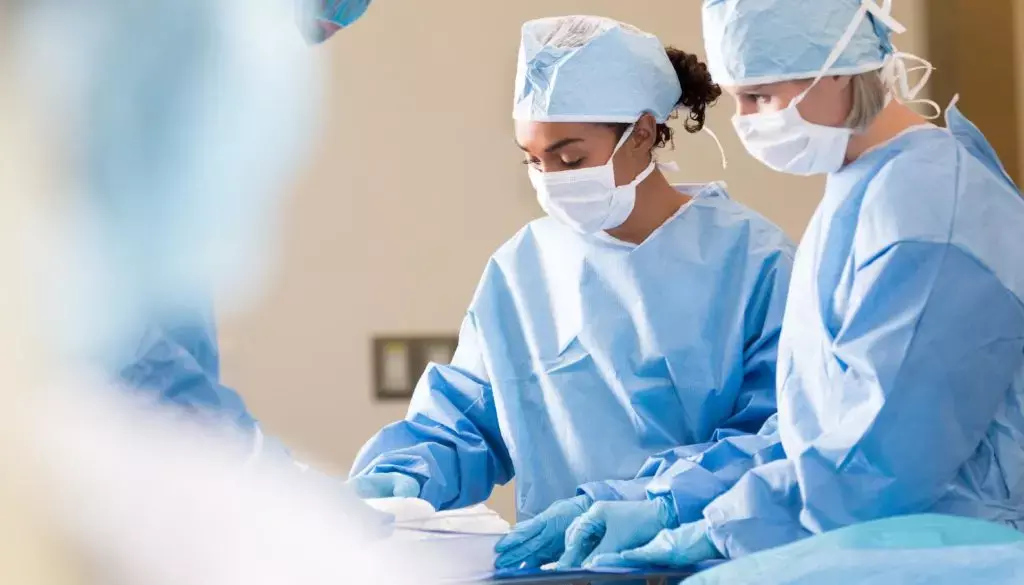- Home
- Medical news & Guidelines
- Anesthesiology
- Cardiology and CTVS
- Critical Care
- Dentistry
- Dermatology
- Diabetes and Endocrinology
- ENT
- Gastroenterology
- Medicine
- Nephrology
- Neurology
- Obstretics-Gynaecology
- Oncology
- Ophthalmology
- Orthopaedics
- Pediatrics-Neonatology
- Psychiatry
- Pulmonology
- Radiology
- Surgery
- Urology
- Laboratory Medicine
- Diet
- Nursing
- Paramedical
- Physiotherapy
- Health news
- Fact Check
- Bone Health Fact Check
- Brain Health Fact Check
- Cancer Related Fact Check
- Child Care Fact Check
- Dental and oral health fact check
- Diabetes and metabolic health fact check
- Diet and Nutrition Fact Check
- Eye and ENT Care Fact Check
- Fitness fact check
- Gut health fact check
- Heart health fact check
- Kidney health fact check
- Medical education fact check
- Men's health fact check
- Respiratory fact check
- Skin and hair care fact check
- Vaccine and Immunization fact check
- Women's health fact check
- AYUSH
- State News
- Andaman and Nicobar Islands
- Andhra Pradesh
- Arunachal Pradesh
- Assam
- Bihar
- Chandigarh
- Chattisgarh
- Dadra and Nagar Haveli
- Daman and Diu
- Delhi
- Goa
- Gujarat
- Haryana
- Himachal Pradesh
- Jammu & Kashmir
- Jharkhand
- Karnataka
- Kerala
- Ladakh
- Lakshadweep
- Madhya Pradesh
- Maharashtra
- Manipur
- Meghalaya
- Mizoram
- Nagaland
- Odisha
- Puducherry
- Punjab
- Rajasthan
- Sikkim
- Tamil Nadu
- Telangana
- Tripura
- Uttar Pradesh
- Uttrakhand
- West Bengal
- Medical Education
- Industry
Do Absorbable sutures provide better outcome in Pelvic organ prolapse?

A new study published in Obstetrics & Gynecology Journal suggests that following the suspension of the uterosacral ligament, the sacrospinous ligament, and the sacrocolpopexy, success rates for absorbable and permanent suture were comparable.
Pelvic organ prolapse (POP) is frequent. In her lifetime, one in eight women will have POP surgery. Surgery to treat apical POP is frequently performed using abdominal sacrocolpopexy with mesh and native tissue vaginal suspensions, including uterosacral ligament suspension and sacrospinous ligament fixation. There is contradictory data to support the use of suture material during POP surgery, as well as whether the kind of suture influences anatomic or subjective results following surgery. As a result, this study was carried out to investigate how permanent suture vs absorbable suture impacts anatomic effectiveness in sacrocolpopexy and native tissue vaginal suspension with mesh.
Women receiving apical prolapse surgery were included in the study. For apical prolapse surgery, the intervention was permanent suture, and the counterpart was absorbable suture. Each research had a distinct anatomic success proportion. Suture and mesh exposures, surgery for suture and mesh dyspareunia, complication, and granulation tissue were among the adverse events recorded. Abstracts were double-screened, as were full-text articles, and accepted papers were double-extracted. GRADE (Grading of Recommendations Assessment, Development, and Evaluation) standards were used to assess the quality of the studies. Random effects meta-analyses of pooled proportions were used to assess anatomic success in single-arm trials utilizing either permanent or absorbable suture. Random effects meta-analyses of pooled risk ratios were employed in comparative studies comparing both suture types.
The key findings of this study were:
398 full-text papers were evaluated out of 4,658 abstracts searched, and 63 research were included.
At a 2-year follow-up, there was no difference in uterosacral ligament suspension and sacrospinous ligament suspension using permanent versus absorbable suture.
Similarly, there was no difference in 18-month follow-up between permanent and absorbable suture in sacrocolpopexy.
In a meta-analysis, there was no difference in the relative risk (RR) of success between permanent and absorbable suture for uterosacral and sacrospinous ligament suspension.
These findings should comfort surgeons who do apical prolapse surgery with absorbable suture, notably vaginal suspensions such as uterosacral ligament suspension, sacrospinous ligament suspension, and sacrocolpopexy. When utilized for apical prolapse repair, absorbable suture and permanent suture (excluding braided polyester) have comparable success rates. Furthermore, absorbable suture is anticipated to result in fewer suture exposure and problems, as well as fewer repeat procedures for suture issues.
Reference:
Pollack, B. L., Popiel, P., Toaff, M. C., Drugge, E., Bielawski, A., Sacks, A., Bibi, M., Friedman-Ciment, R., LeBron, K., Alishahian, L., Phillips, D., Rubino, S. R., Pollack, S., Khan, R. S., Khan, E. S., Pape, D. M., & Grimes, C. L. (2023). Permanent Compared With Absorbable Suture in Apical Prolapse Surgery. In Obstetrics & Gynecology (Vol. 141, Issue 2, pp. 268–283). Ovid Technologies (Wolters Kluwer Health). https://doi.org/10.1097/aog.0000000000005032
Neuroscience Masters graduate
Jacinthlyn Sylvia, a Neuroscience Master's graduate from Chennai has worked extensively in deciphering the neurobiology of cognition and motor control in aging. She also has spread-out exposure to Neurosurgery from her Bachelor’s. She is currently involved in active Neuro-Oncology research. She is an upcoming neuroscientist with a fiery passion for writing. Her news cover at Medical Dialogues feature recent discoveries and updates from the healthcare and biomedical research fields. She can be reached at editorial@medicaldialogues.in
Dr Kamal Kant Kohli-MBBS, DTCD- a chest specialist with more than 30 years of practice and a flair for writing clinical articles, Dr Kamal Kant Kohli joined Medical Dialogues as a Chief Editor of Medical News. Besides writing articles, as an editor, he proofreads and verifies all the medical content published on Medical Dialogues including those coming from journals, studies,medical conferences,guidelines etc. Email: drkohli@medicaldialogues.in. Contact no. 011-43720751


